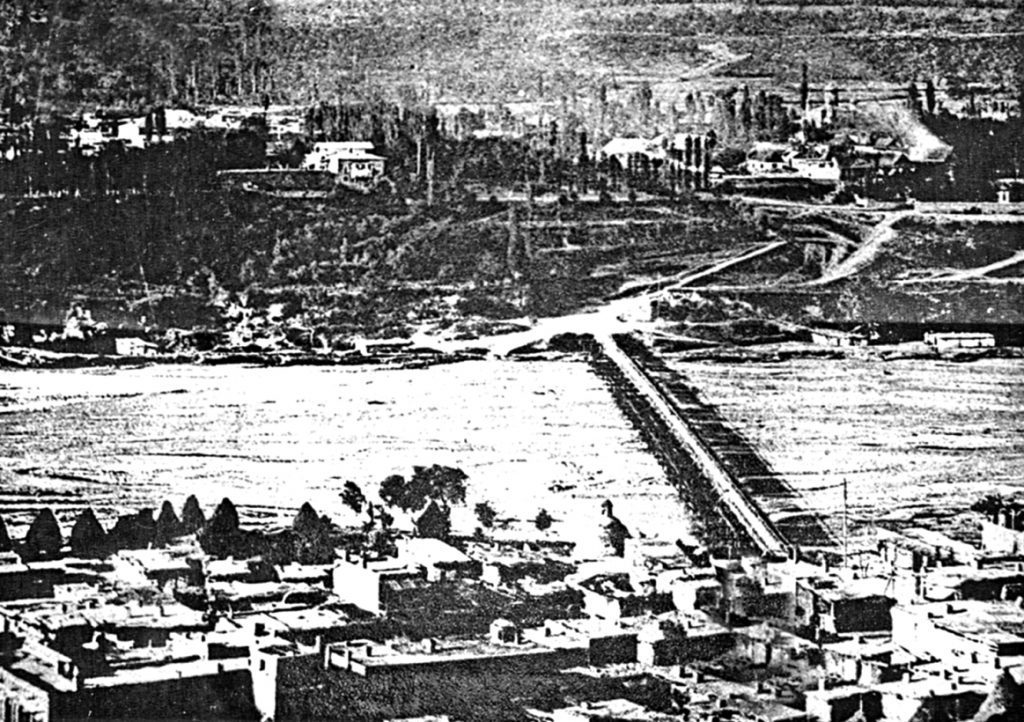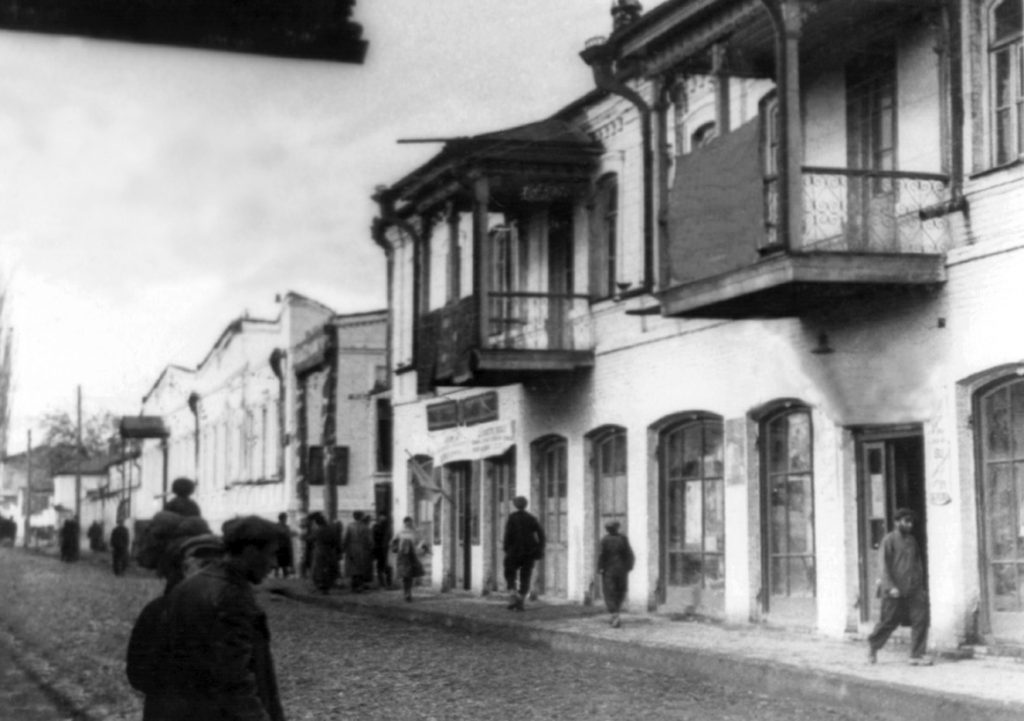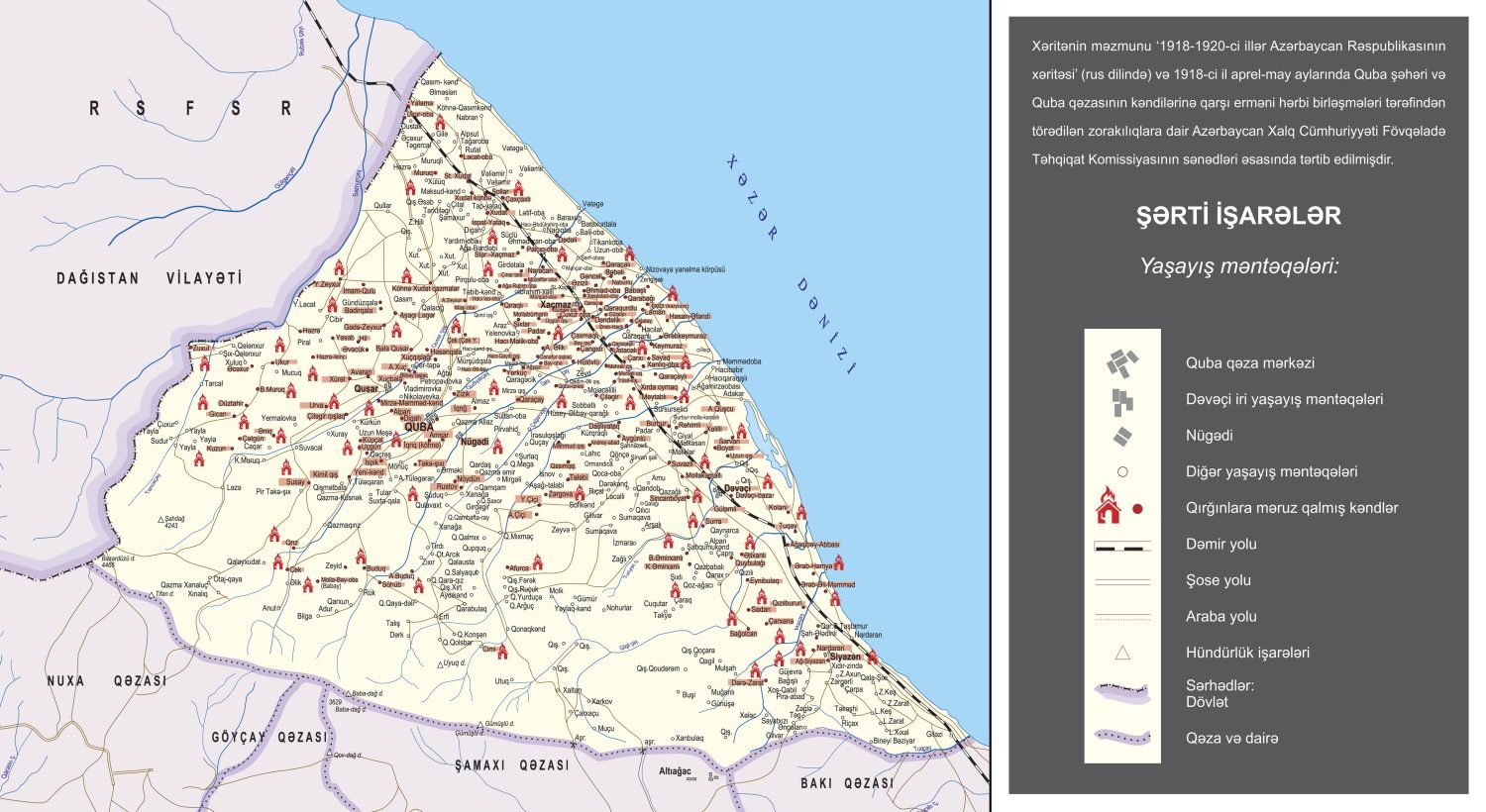









After the bloody March events of 1918, in order to expand Soviet power, D. Genovanini was sent to Guba area. The people of Guba were aware of the bloody clashes in Baku and Shamakha and the violence by the Armenian Dashnaks towards the Muslim population of the cities and villages of these areas. In case of failure to accept the ultimatum, given by Gelovani about recognition and submission of Soviet power, the whole city was exposed to danger.
The population of Guba, having obeyed the ultimatum, lived under Soviet rule for 8 days. On the 9th day of Soviet power, armed attacks by local residents began in Guba. In support of Gelovani, a military force with two guns, consisting of 150 Armenians led by Agaanian, arrived from Khachmaz. After three days of intense fighting, local groups expelled the first Bolshevik “team” from Guba/
Outstanding figures of the Guba community – Ali Bey Zizikski, Hamdullah Efendi Efendizade, Aliabbas bey Alibekov, from the Shihlar Beks – Mursal bek and Ibrahim bek, Mohubeli Efendi Kuzunlu, Khatam agha Jagarvi, Baibala bek Alpanly and others established special cavalry units to defend Guba area.
In response to these incidents, on May 1, 1918, under the command of Hamazasp, 3,000 Armenian troops invaded Guba from three sides and began to shoot with cannons, machine guns and rifles. Together with the Azerbaijani population, representatives of ethnic groups and Jews living in the area were brutally killed. There was no doubt that the main goal of Hamazasp was not to create a new government, but to fulfill its mission of punishment. Hamazasp personally gathered people in front of the Juma mosque and addressed them in the following speech: “I come from Erzurum. I fought the Turks a long time ago. I am a hero of the Armenian people and a defender of their interests… I am not here to set rules and establish Soviet power, but to avenge the killed Armenians. “
According to the investigation by the Extraordinary Investigation Commition, the cases of violence in Guba and the villages of Guba are reflected in the compendium and consist of 451 pages in three toms. As a result, in April-May 1918, the Hamazasp gang in Guba burned and plundered 167 villages, the number of killed people in Guba area was about 16 thousand people, and the material damage caused to the population was more than 121,824,819 rubles..






